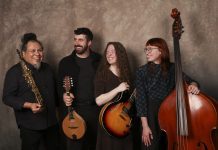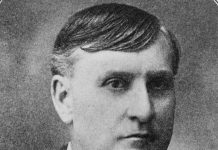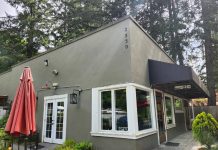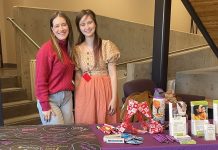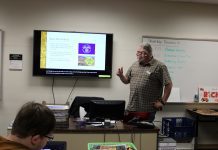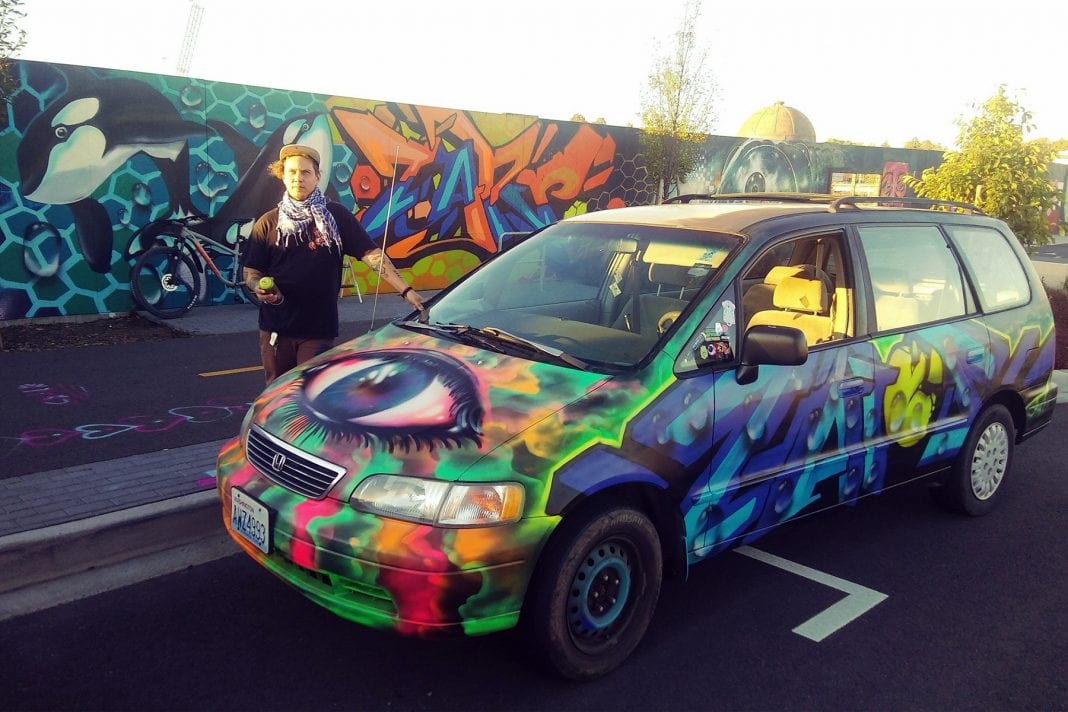Take a walk around Bellingham and you’re likely to come across one of the many examples of homegrown public art that have sprung up over the last few years. Spray painted murals can be spotted on the sides of businesses and in alleys all over town, and what once may have been dubbed “graffiti” is now art that turns public spaces into open air galleries.
Taj Williams is one of those artists, and he’s working to make this art form even more visible in his hometown. He was born in Tacoma, but moved to Bellingham when he was six, and attended Seattle’s Cornish College of the Arts and majored in fine arts video and photography.
Artistic talent and entrepreneurial spirit were both evident in Williams’ youth, and it didn’t take long for him to meld the two. “I always liked to draw when I was a kid. I remember selling my drawings at a garage sale, and selling some drawings I did on this old computer paper that my dad had,” he says. Those were the days when printer paper came in one long, perforated sheet, with holes along the edges to guide it through the printer. “So I could do these long drawings on it that were like comic book scenes.”

As he grew older, Williams’ life became more complicated and, like many other kids, the arts became his refuge. “I had some troubled times. I lost my brother the summer before I started high school; he passed away in the pipeline explosion that happened here in Bellingham,” Williams says. “So that and starting high school was a lot to handle. I didn’t really enjoy high school very much for a while, but art class was one of my favorite classes—it’s one of the only classes I didn’t skip.”
Williams made it through, and although his Bachelor of Fine Arts focused on photography, the media for his main creative outlet continued to evolve. “A lot of it used markers on paper, then I moved to canvas and brushes. But I would still use markers and mixed media,” he says. “I didn’t get good at spray painting until I was much older, out of college. I did my first mural using brushes and spray paint while I was in Seattle, at an all-ages nightclub that was across the street from the Space Needle.”
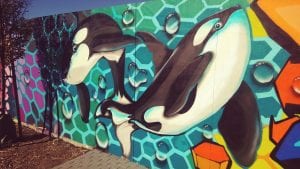
That type of large-scale, public mural has become his passion. Currently, he’s working on the wall that separates the new Waypoint Park in downtown Bellingham from the nearby construction projects. “I’ve been putting a good chunk of time and energy into it and hoping it will catch the eye of the right person [so] I can get a more permanent mural,” Williams says. “I’ve put together a GoFundMe page to help with supplies to complete the murals I’m currently working on.”
This is where Williams’ entrepreneurial side emerges again. If the owner of a property, business or facility is interested in seeing what an artist can do with their blank structure, he suggests they look through his Instagram page or send him an email.
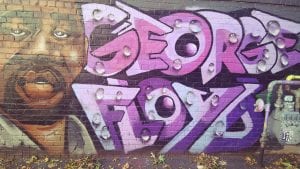
Williams points out that any new mural projects would be in good company—record-setting company, in fact. “We have the biggest mural in Washington State,” he says, referencing the mountain-range mural created by Gretchen Leggitt on the side of PSE’s long warehouse building at the end of Cornwall Avenue. “And we had the biggest in Washington before that, as well, which is behind the Subaru dealership on Iowa Street, on the back of their building.” Created by Ryan “Henry” Ward, the whimsical animal-themed work can be seen from the Whatcom Creek Trail.
Of course, anytime a person approaches a wall with a can of spray paint, some folks get a little apprehensive, and Williams is ready to address those concerns.

“I don’t mind the word graffiti, but I understand that it triggers some people; maybe they’ve seen their neighborhood get tagged up a bunch, and that’s what they think about,” Williams says. “But it is a style, and all around the world graffiti is accepted. It’s going be taught in fine art colleges soon, and it’s going to be in the history books as a certain style that happened in a certain time. I feel like we need to reclaim the word.”
The proud father of 10-year-old twins, Williams is also glad to see that acceptance in a more personal and immediate way. “When I was painting down at the waterfront a few weeks ago, a guy and his son—who must have been 10 or 11—came up to me. He said, ‘My son really likes graffiti art, he really wants to get into it. He’s been practicing on our fence in our backyard, and he’s made canvases,’” Williams says. “I was blown away that his dad was supporting him, that they were finding ways for him to practice, and he was very accepting of his son being into it. People are enjoying the free form of expression, and I think Bellingham needs that.”




